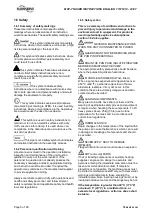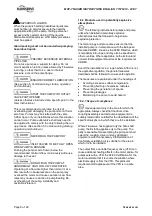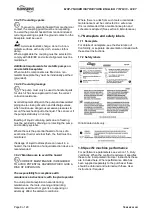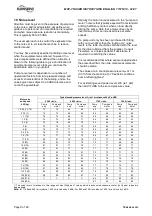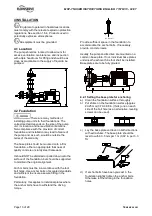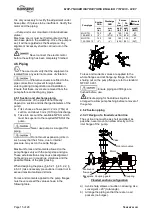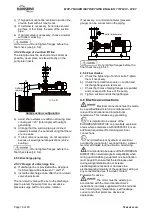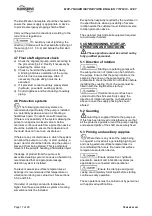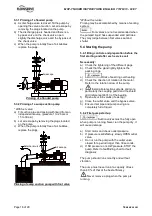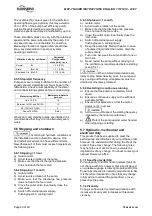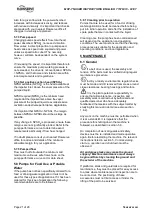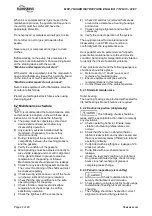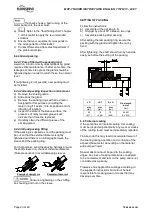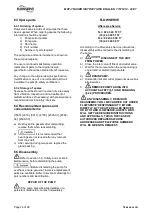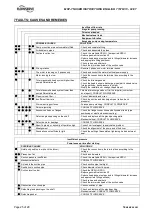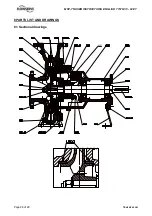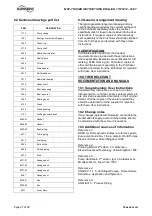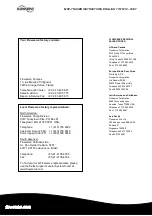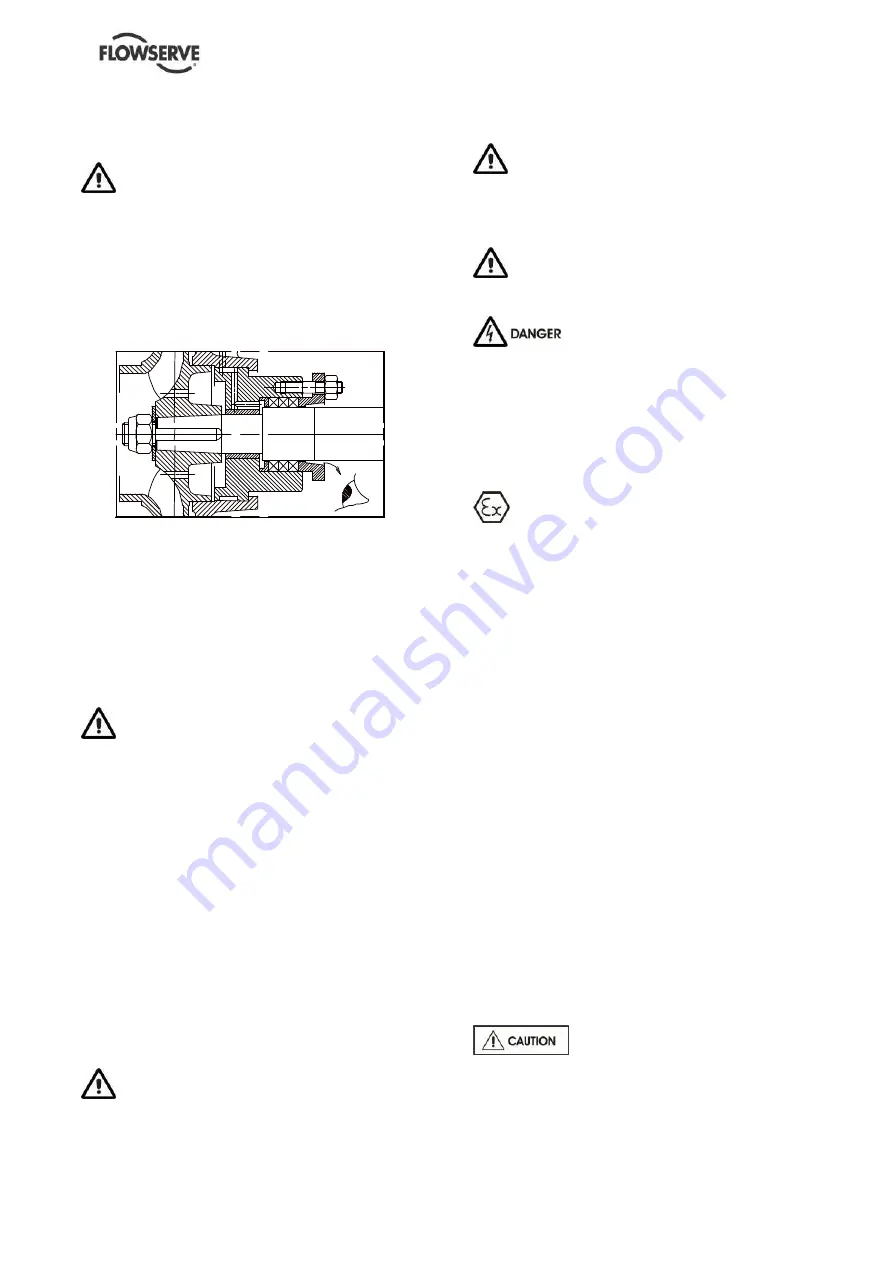
MHP-TN USER INSTRUCTIONS ENGLISH 71576313 - 02/07
Page 19 of 28
flowserve.com
5.5 Running the pump
5.5.1 Venting the pump
Vent the pump to enable all trapped air to
escape taking due care with hot or hazardous
liquids.
Under normal operating conditions, after the pump
has been fully primed and vented, it should be
unnecessary to re-vent the pump.
5.5.2 Pump fitted with a stuffing box
If the pump has a packed gland there must be
some leakage from the gland. Gland nuts should
initially be finger tight only. Leakage should take
place soon after the stuffing box is pressurized. If
no leakage takes place the packing will begin to
overheat. If overheating takes place the pump
should be stopped and allowed to cool before
being restarted. When the pump is restarted it
should be checked to ensure leakage is taking
place at the packed gland.
When adjusting an operating stuffing box
(shield grids removed for this operation), the
operator must be very careful. Safety gloves are
compulsory and loose clothes are not allowed
(above all to the arms) to avoid being caught by
the pump shaft.
The pump should be run for ten minutes with
steady leakage and the gland nuts tightened by 10
degrees at a time until leakage is reduced to an
acceptable level.
The temperature of the gland should be checked
after each round of tightening. If the temperature
starts to climb rapidly then back off the gland nuts
until the temperature drops down. Wait for the
temperature to stabilize before tightening again.
The leakage must not be reduced below a rate of
20 drops per minute. Bedding in of the packing
may take several hours.
Shield grids being removed during
installation of the gland packing, it must be
ensured that they are replaced as soon as this
operation is completed.
SAFETY INSTRUCTIONS WHEN THE PUMP IS
RUNNING:
If hot or freezing components of the machine
can present a danger to operators, they must be
shielded to avoid accidental contact. If a 100 %
protection is not possible, the machine access
must be confined to the maintenance staff only.
If the temperature is greater than 80 °C (176
°F), a warning plate must be clearly placed on the
pump.
It is strictly forbidden to open switch
cupboards, switch boxes, or all other live electric
equipment. If it is necessary to open them in order
to take readings, to carry out tests or adjustments
for example, only a skilled technician may do them
with adapted tools. Make sure that physical
protection against electrical risks are used.
5.5.3 Bearings
If the pumps are working in a potentially
explosive atmosphere, temperature or vibration
monitoring at the bearings is recommended.
If bearing temperatures are to be monitored it is
essential that a benchmark temperature is
recorded at the commissioning stage and after the
bearing temperature has stabilized.
Record the bearing temperature (t) and the
ambient temperature (ta)
Estimate the likely maximum ambient
temperature (tb)
Set the alarm at (t+tb-ta+5)
C [(t+tb-ta+10)
F]
and the trip at 100
C (212
F) for oil
lubrication and 105
C (220
F) for grease
lubrication
It is important, particularly with grease lubrication,
to keep a check on bearing temperatures. After
start up the temperature rise should be gradual,
reaching a maximum after approximately 1.5 to 2
hours. This temperature rise should then remain
constant or marginally reduce with time.
5.5.4 Normal vibration levels, alarm and trip
For guidance, pumps generally fall under a
classification for rigid support machines within the
International rotating machinery standards and the
recommended maximum levels below are based
on those standards.
Alarm and trip values for installed
pumps should be based on the actual
measurements (N) taken on site on the bearing
housings of the pump in the fully commissioned as
new condition.

